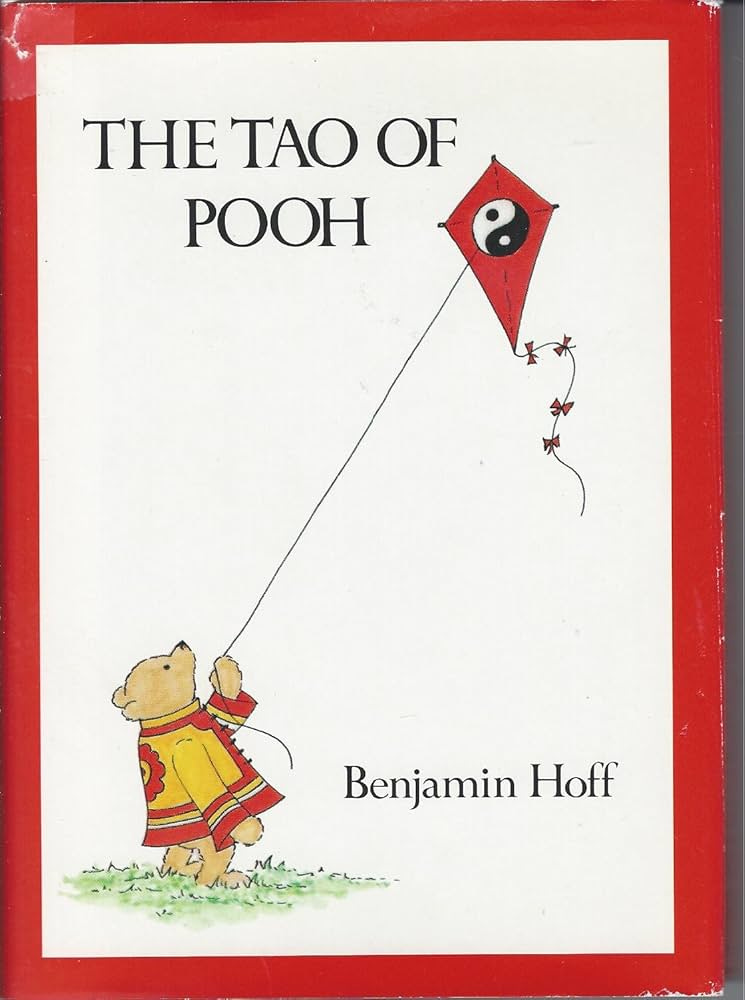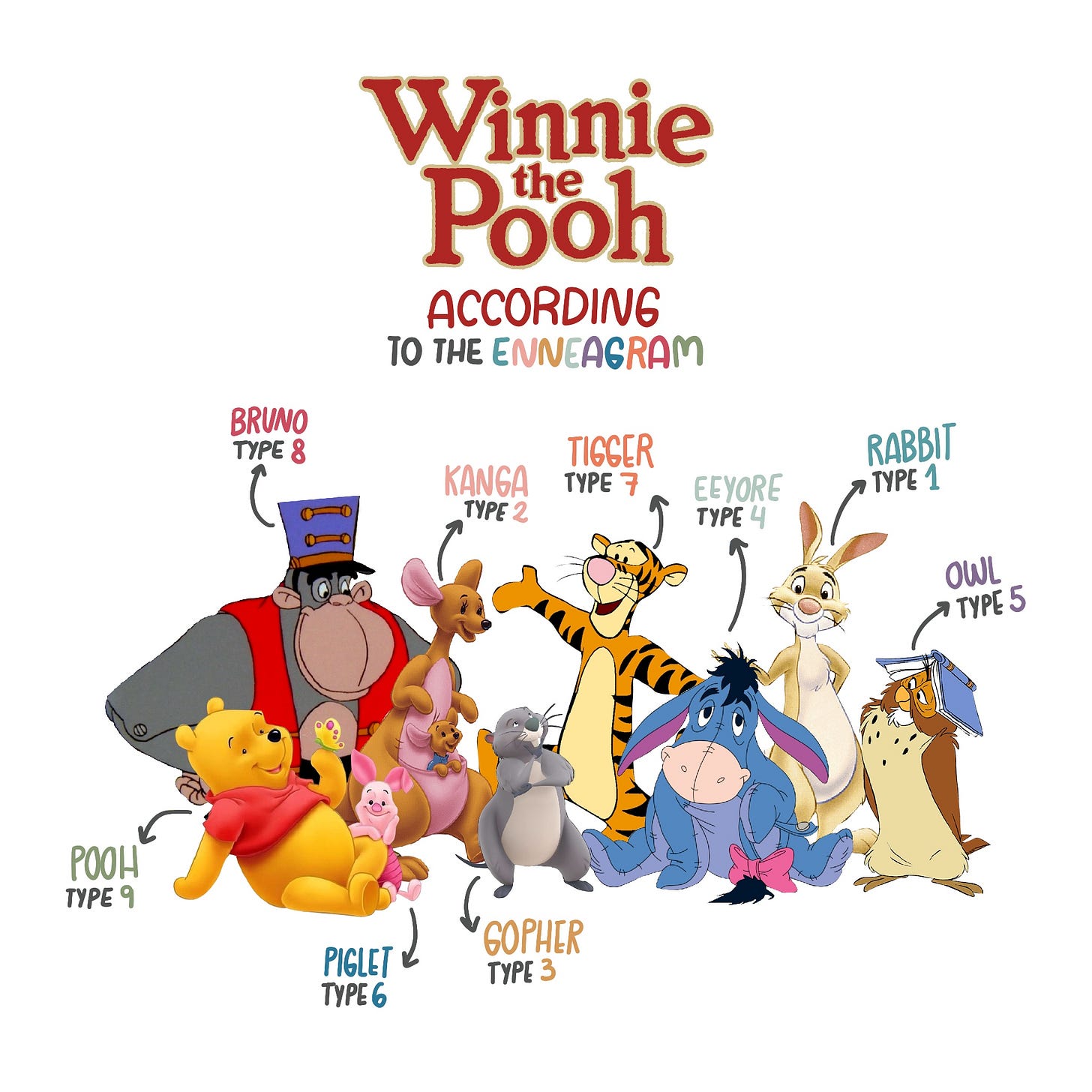Louis | March 28, 2025
Unlocked: The Conceptual Winnie the Pooh Edition
On the Enneagram, Taoism, and Modern Love.
This previously went out to our paid subscribers. Many good things happen behind the paywall, should you feel like upgrading your subscription. For now, enjoy this free!
Louis here. This weekend’s New York Times ‘Modern Love’ column was a moving tale of a husband who, after taking the Enneagram personality test, began to lash out at his family.
The test, which assigns numbers to different personality types, had revealed that the man was a Nine – “The Peacemaker.” He couldn’t handle it. I won’t spoil the ending, but things (and numbers) do get better.
I told my friend about the essay, and she asked me if I’d seen the Winnie the Pooh-Enneagram correlation. Apparently, the characters in Winnie the Pooh fit cleanly into the nine Enneagram personality styles, from Eeyore (Type Four, Individualist) to Tigger (Type Seven, Enthusiast) to Pooh (Type Nine, Peacemaker).
Why is this interesting?
As Kendra Nicola writes in her look at the overlap, this isn’t the most outlandish thing:
“Because fictional characters tend to follow predictable behavior patterns, it’s not uncommon for a character to align with an Enneagram number.” In fact, she writes, “numerous blog posts and online forums have been dedicated to introducing people to their literary Enneagram doppelgängers.”
What struck me as more unusual was that it was the second time I’d heard of Winnie the Pooh being used to illustrate a complicated conceptual spiritual framework. I’m a proud owner of the best-selling ‘The Tao of Pooh’, a 1982 book by Benjamin Hoff, which uses Winnie the Pooh’s characters to explain the basic beliefs of philosophical Taoism. (The soothing back cover reads: “While Eeyore frets, and Piglet hesitates, and Rabbit calculates, and Owl pontificates… Pooh just is.”)
As it turns out, Winnie the Pooh has also come to be seen as a possible way to understand the Seven Deadly Sins, or the Gospel. Other Redditors argue that each character represents different a psychological disorder, or even class of drug. Pooh has even been held up as a master of design thinking.
‘Pooh and the Philosophers’, by John T. Williams, uses Winnie the Pooh as a backdrop to explain the work of various philosophers, including Descartes, Kant, Plato and Nietzsche. In fact, there is even a funny-looking book—‘The Pooh Perplex’—that uses Winnie the Pooh to satirize academics who read too much into their source material.
Pooh has also, of course, become increasingly relevant in China, where the book and access to information about it has been censored since 2017, after images proliferated comparing the bear to President Xi Jinping. (Taiwanese pilots have even worn morale patches featuring a Formosan black bear punching poor Winnie-the-Pooh in the face.)
All of this makes me want to do one thing: Read the original books themselves. If there’s enough ammo in them to host hundreds of theories and riffs, they must tell an enjoyable, clear story. And given that it was just Winnie’s 100th birthday, I feel it really is high time I paid a visit to the Hundred Acre Wood. (LC)
If you are interested in the future of autonomy, check out the Ride AI summit happening next week (4/2) in Hollywood. Ride AI is all about digging into the real work happening in AV today—what’s working, what’s still challenging, and what it takes to make driverless tech an integrated part of our world. They’re gathering a tight-knit group of CEOs and other leaders in autonomous vehicles and AI-driven hard-tech for an exclusive experience, emphasizing meaningful discussions, inspiring presentations, and in-depth networking.
WITI subscribers can save 50% on tickets this week by registering here: https://ti.to/rideai/ride-ai-2025/with/witi-x-ride-ai




